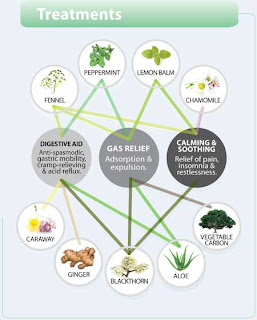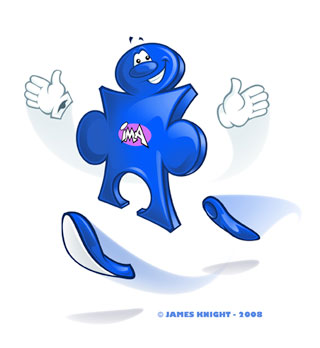
 This is a condition a severe paroxysmal pain in the abdomen, due to spasm, obstruction, or distention of some one of the hollow viscera . There are some kinds of Colic pain .Hepatic colic, the severe pain produced by the passage of a gallstone from the liver or gall bladder through the bile duct .Intestinal colic, or Ordinary colic, pain due to distention of the intestines by gas. Lead colic , Painter's colic, a violent form of intestinal colic, associated with obstinate constipation, produced by chronic lead poisoning. Renal colic, the severe pain produced by the passage of a calculus from the kidney through the ureter.Wind colic.
HOMOEOPATHIC REMEDIES FOR COLIC PAIN:-
ARG NIT 200:
• Painful spot over stomach, from which pain radiates to all parts of the abdomen.
• Severe pain on account of hiatus hernia, below the centre of the rib cage.
• Painful swelling of pit of the stomach.
• Burning and constriction; ulceration of the stomach. Hyperacidity.
ARSENIC ALB 200:
• Pain in food poisoning.
• Unbearable pain with burning stomach upset.
• Pain on account of enlargement of liver and spleen.
• Black, bloody diarrhea.
• Hot food relieves.
• Cold food disagrees.
BELLADONNA 200:
• Burning, cutting pain; distension in stomach.
• Spasm of stomach. Pain as if clutched by a hand.
• Great thirst for cold water.
• Worse jar, pressure. Sensitive to even bedclothes.
BERBERIS VULGARIS 200:
• Stitches in the region of gall bladder. Catarrh of gall bladder.
• Stitching pain in front of kidney, extending to liver, spleen, stomach, groin.
• Worse pressure.
CARBO VEG 200:
• Constrictive, uncreative pain extending to chest with distension of abdomen. Flatulent colic.
• Ulcers in the stomach; burning coals sensation.
CEANOTHUS 30:
• Splenetic enormous enlargement of the spleen. Hypertrophy of the spleen. Pain on the left side.
CHAMOMILLA 200:
• Acute duodenitis. Inflammation and pain of duodenum. Griping pain in region of navel and pain in the small or back.
• Flatulence.
• Child in great agony.
CHIONANTHUS 30:
• Aching an umbilical region. Griping pain, severe spasmodic intestinal pain.
• Feels as if a string were tied in a ‘slip-knot’ around intestines, which was suddenly drawn tight and then gradually loosened.
• Pain in enlarged liver, enlarged spleen. Jaundice.
• Hepatitis pain.
• Gall stone colic.
• Constipation. CICUTA 200:
• Colic with convulsions. CINA 200:
• Twisting pain abou navels. Due to worms of any type.
COLOCYNTHIS 200:
• Agoinisng, cutting pain in abdomen, causing th epatient to double over.
• Child doubles up and tosses in agony.
• Sesation as if stones were being ground together in the abdomen and that it would burst.
• Dysenteric stool each time some food is taken. Stool like jelly with foul odour.
• Colic and cramps in calves.
• Flatulence.
• Better from pressure, hard pressure.
• Worse from anger and indignation.
HEPAR SULPH 200:
• Stitches in the region of the liver, with weakness or coughing. Abscess of the liver.
• Pain in hepatitis.
IPECAC 200:
• Pain of amoebic dysentery with tenesmus. Cutting. Worse around navel. Nauseating.
KALI BI 200:
• Stitches in the region of liver and spleen, through to spine.
• Cirrohosis of the liver.
• Chronic duodenitis.
LYCOPODIUM 200:
• Pain shooting across lower abdomen from right to left. Liver sensitive.
• Chronic appendicitis.
• Flatulence downwards.
MAG PHOS 200:
• Flatulent colic, forcing patient to bend double.
• Constatnt flatus. Bleching of gas but no relief.
• Relief by warmth and pressure.
NUX VOM 200:
• Pressure as of a stone several hours after eating. Colic. Pains so cutting that the patient feels forced to bend double.
• In persons leading an irregular life, eating, drinking and keeping late hours.
PLUMBUM MET 30:
• Excessive excruciating colic radiating to all parts of the body.
• Abdomen retracted as if pulled by a string to the spine.
PODOPHYLLUM 200:
• Gastroenteritis with colic pain and bilious vomiting.
• Gushing, fetid stool. Yellowish stool. Painless. Early morning.
• Worse in summer.
STAPHYSAGRIA 200:
• Severe pain following abdominal operation.
VERATRUM ALB 1000:
• Terrible colic. Abdomen swollen. Cholera with nausea and copious vomiting.
• Sinking, empty, cold feeling in the stomach.
• Rice-coloured, thin, copious stool. Unbearable frequency.
• Collapse. Skin blue. Fa
This is a condition a severe paroxysmal pain in the abdomen, due to spasm, obstruction, or distention of some one of the hollow viscera . There are some kinds of Colic pain .Hepatic colic, the severe pain produced by the passage of a gallstone from the liver or gall bladder through the bile duct .Intestinal colic, or Ordinary colic, pain due to distention of the intestines by gas. Lead colic , Painter's colic, a violent form of intestinal colic, associated with obstinate constipation, produced by chronic lead poisoning. Renal colic, the severe pain produced by the passage of a calculus from the kidney through the ureter.Wind colic.
HOMOEOPATHIC REMEDIES FOR COLIC PAIN:-
ARG NIT 200:
• Painful spot over stomach, from which pain radiates to all parts of the abdomen.
• Severe pain on account of hiatus hernia, below the centre of the rib cage.
• Painful swelling of pit of the stomach.
• Burning and constriction; ulceration of the stomach. Hyperacidity.
ARSENIC ALB 200:
• Pain in food poisoning.
• Unbearable pain with burning stomach upset.
• Pain on account of enlargement of liver and spleen.
• Black, bloody diarrhea.
• Hot food relieves.
• Cold food disagrees.
BELLADONNA 200:
• Burning, cutting pain; distension in stomach.
• Spasm of stomach. Pain as if clutched by a hand.
• Great thirst for cold water.
• Worse jar, pressure. Sensitive to even bedclothes.
BERBERIS VULGARIS 200:
• Stitches in the region of gall bladder. Catarrh of gall bladder.
• Stitching pain in front of kidney, extending to liver, spleen, stomach, groin.
• Worse pressure.
CARBO VEG 200:
• Constrictive, uncreative pain extending to chest with distension of abdomen. Flatulent colic.
• Ulcers in the stomach; burning coals sensation.
CEANOTHUS 30:
• Splenetic enormous enlargement of the spleen. Hypertrophy of the spleen. Pain on the left side.
CHAMOMILLA 200:
• Acute duodenitis. Inflammation and pain of duodenum. Griping pain in region of navel and pain in the small or back.
• Flatulence.
• Child in great agony.
CHIONANTHUS 30:
• Aching an umbilical region. Griping pain, severe spasmodic intestinal pain.
• Feels as if a string were tied in a ‘slip-knot’ around intestines, which was suddenly drawn tight and then gradually loosened.
• Pain in enlarged liver, enlarged spleen. Jaundice.
• Hepatitis pain.
• Gall stone colic.
• Constipation. CICUTA 200:
• Colic with convulsions. CINA 200:
• Twisting pain abou navels. Due to worms of any type.
COLOCYNTHIS 200:
• Agoinisng, cutting pain in abdomen, causing th epatient to double over.
• Child doubles up and tosses in agony.
• Sesation as if stones were being ground together in the abdomen and that it would burst.
• Dysenteric stool each time some food is taken. Stool like jelly with foul odour.
• Colic and cramps in calves.
• Flatulence.
• Better from pressure, hard pressure.
• Worse from anger and indignation.
HEPAR SULPH 200:
• Stitches in the region of the liver, with weakness or coughing. Abscess of the liver.
• Pain in hepatitis.
IPECAC 200:
• Pain of amoebic dysentery with tenesmus. Cutting. Worse around navel. Nauseating.
KALI BI 200:
• Stitches in the region of liver and spleen, through to spine.
• Cirrohosis of the liver.
• Chronic duodenitis.
LYCOPODIUM 200:
• Pain shooting across lower abdomen from right to left. Liver sensitive.
• Chronic appendicitis.
• Flatulence downwards.
MAG PHOS 200:
• Flatulent colic, forcing patient to bend double.
• Constatnt flatus. Bleching of gas but no relief.
• Relief by warmth and pressure.
NUX VOM 200:
• Pressure as of a stone several hours after eating. Colic. Pains so cutting that the patient feels forced to bend double.
• In persons leading an irregular life, eating, drinking and keeping late hours.
PLUMBUM MET 30:
• Excessive excruciating colic radiating to all parts of the body.
• Abdomen retracted as if pulled by a string to the spine.
PODOPHYLLUM 200:
• Gastroenteritis with colic pain and bilious vomiting.
• Gushing, fetid stool. Yellowish stool. Painless. Early morning.
• Worse in summer.
STAPHYSAGRIA 200:
• Severe pain following abdominal operation.
VERATRUM ALB 1000:
• Terrible colic. Abdomen swollen. Cholera with nausea and copious vomiting.
• Sinking, empty, cold feeling in the stomach.
• Rice-coloured, thin, copious stool. Unbearable frequency.
• Collapse. Skin blue. Fa
Friday, November 6, 2009
Colic Pain.( Qolanj = in Urdu )
Posted by Dr.Mubashar Ahmad Khan at 4:47 AM
Subscribe to:
Post Comments (Atom)



0 comments:
Post a Comment